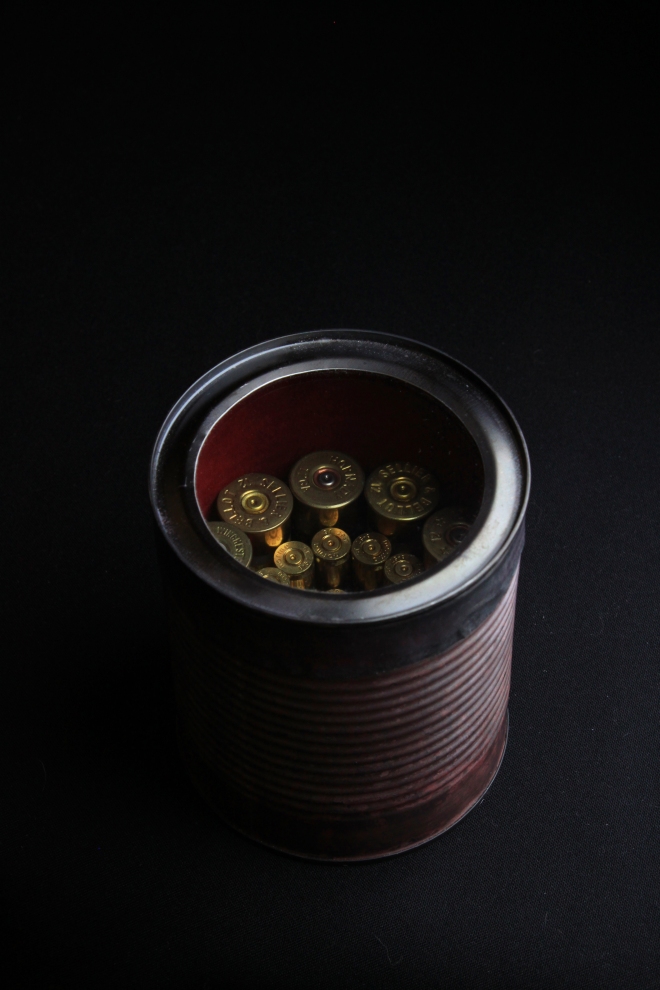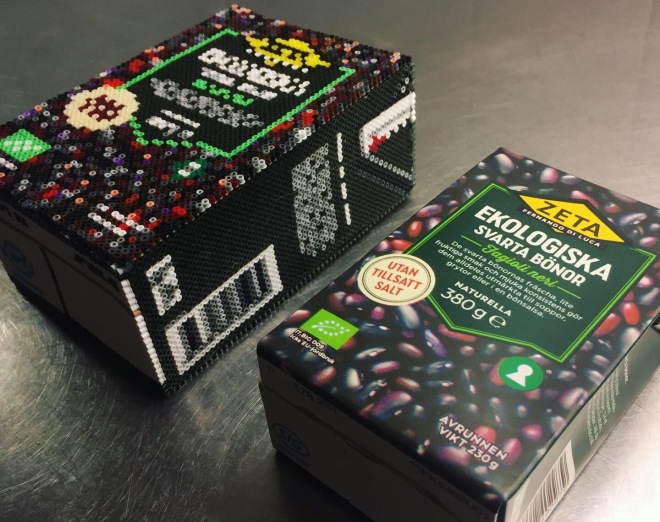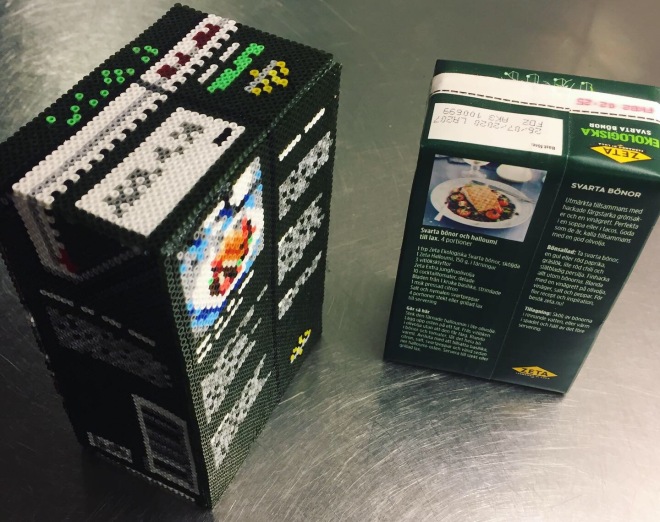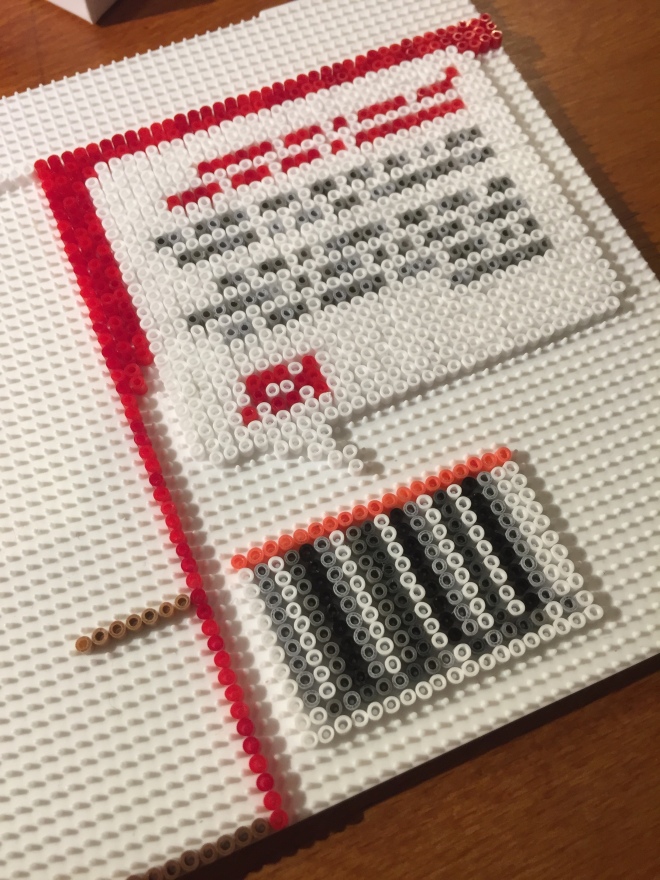A banana is kind of a fruit growing in its own can.







A banana is kind of a fruit growing in its own can.







Beans for the bunker!

Backward beading.

Original can cover.

Backwards beaded can cover.

Baked bunker beans.
After reminiscing about old cans, I return to the present, and continue to pixelate the cans in my house. I think this is my favourite so far! Coconut milk. Important to ad to every bunkering-kit!





Last part of my memories of “Memories from a parallel future”: PAYING THE PRICE OF SURVIVAL
I collect cans, shoot them and gather the shells in jars. I enclose. To protect and hide. To keep, portion and ration. I put the beetroot’s broken bones in a cast and shoot it to pieces that wither and dry. I plant seeds in cans of glass and water them with saturated salt water.


The thing is: we are the descendants of the survivors. In every catastrophe, every time in history when humans have done horrible things to stay alive, our ancestors have survived. Every last one of them. Somehow that doesn’t cheer me up.

Part 4 of my memories of “Memories from a parallel future”: SURVIVING
Depletion of resources always leads to violence. We know this, but still we keep nibbling at the earth a little chunk at a time. What do we plan to do when there is nothing left?
During crises rituals become more important to people, we cling to the known and safe. The thought that something has been done the same way, over time, by many people, fill objects, movements and words with meaning and function. We become actors and participants in a wider context, we don’t have to choose – the ritual is already set in its form.


How do we survive today in a way that is worth its price tomorrow?
Part 3, of my memories of Memories from a parallel future: DEFENDING
I’ve never been a threat to anyone. There has never been a reason to kill me. But if I sit there, on a pile of food in a world unable to produce more, I can see three choices: share it and die when it runs out, kill to keep it, or be killed for it. Who do you want to be in that situation?




Next time: SURVIVING
Part 2 of my memories of Memories from a parallel future: PRESERVING.
What has been collected needs to be preserved. Salt is an edible stone that is soluble in water. You sprinkle it on your food and in disappears into it and completely alters the taste. Once a culture has discovered salt, there is no going back. Salt has long been used for preserving food, next to drying and smoking. It preserves life (our’s) because it kills life (what would otherwise live in our food). Kind of like hand sanitiser.




This whole situation reminds me so much of my bachelor project (Memories from a parallel future) that I did back in 2014, that I just have to share a few pictures from it here, even though it’s a finished project! As you can see, I’ve always liked cans…
The project took its starting point in a real global environmental disaster that happened the year 536 CE, that changed the course of history in many ways. Here in Scandinavia, for instance, about half of the population died, the survivors started building forts in places that had never needed them before and they buried their gold in the ground, and new, more violent religions took over from the old ones.
The idea was to imagine a parallel future in which something like this happened again, in a world that was not prepared for it in the same way — since we are farther away from our food sources nowadays and have less wilderness to fall back on (the wild has historically always been a backup when harvests have gone wrong).
The project imagines the survivors of the disaster, and their changed relationship to food that follow from its scarcity.
According to the research I did for this project, there is a kind of timeline to these kinds of disasters, that I simplified into groups of objects focused on: Collecting, Preserving, Defending, Surviving, and Paying the price of survival. Over the coming days I will share one group at a time, starting with:

COLLECTING. A state between control and craziness. Remembering The Road, by Cormac McCarthy, I see the riches in a pile of cans. Riches that you have to constantly consume to stay alive. I calculated that to survive the disaster of 536 (that was most likely an enormous volcanic eruption in El Salvador that lowered the temperature of the whole earth for more than two years, and (among other things) erased two year’s harvests here in Scandinavia), a person of my size would need 4 500 cans of food to survive. So I started collecting cans, and dressing them in velvet and silk, to show their right value. The picture show a few of them.
Next time: PRESERVING.
Next pixelated food container done!



Shut inside my apartment, awaiting better days, I bead the cans before I eat them.







To be continued.